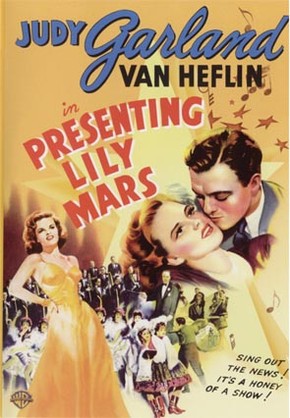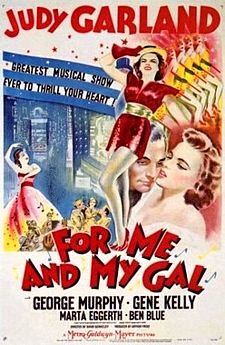Judy by the Numbers: "Caro Nome/When I Look At You"
 Wednesday, May 4, 2016 at 7:30AM
Wednesday, May 4, 2016 at 7:30AM Anne Marie is tracking Judy Garland's career through musical numbers...

With Judy Garland now such an established hit, MGM worked overtime to make the most of its musical star. This meant that while Arthur Freed and the Freed Unit "made" her by crafting her star image (and arguably used her to her best advantage), Judy couldn't work with them exclusively. She was too valuable a commodity for that. So, MGM also put her under the watchful tutelage of another producer well-known for his musical mojo: Joe Pasternak.
The Movie: Presenting Lily Mars (1942)
The Songwriters: Walter Jurmann (music) and Paul Francis Webster (lyrics)
The Players: Judy Garland, Van Heflin, Fay Bainter, Spring Byington, directed by Norman Taurog
The Story: Had Judy's fateful short with Deanna Durbin turned out differently only six years previous, she might have met Joe Pasternak earlier. For most of the 1930s, Pasternak was a top producer at Universal Studios, with major Marlene Dietrich titles such as Destry Rides Again to his credit. However, where Pasternak really made his name was in his big "get" for Universal; he was the man responsible for bringing Durbin to the studio after MGM rejected her. Under his production and guidance, Deanna Durbin became one of the biggest singing stars of the 1930s.
However, the fact remained that Universal was small potatoes next to MGM, so when Pasternak became a major musical producer it was only logical that MGM should hire him. Presenting Lily Mars was his second film for the studio. It was originally bought as a dramatic script for Lana Turner, but Pasternak convinced the studio to recycle some songs and turn it into a Judy Garland musical. Unsurprisingly, it was another hit, grossing over $3.5 million at the box office. What is surprising is that Pasternak and Garland only worked together one more time. After the near-miss six years before, it would take another six years for Judy to work with the high-spirited Hungarian again. And much would change for Judy in that six year period.






